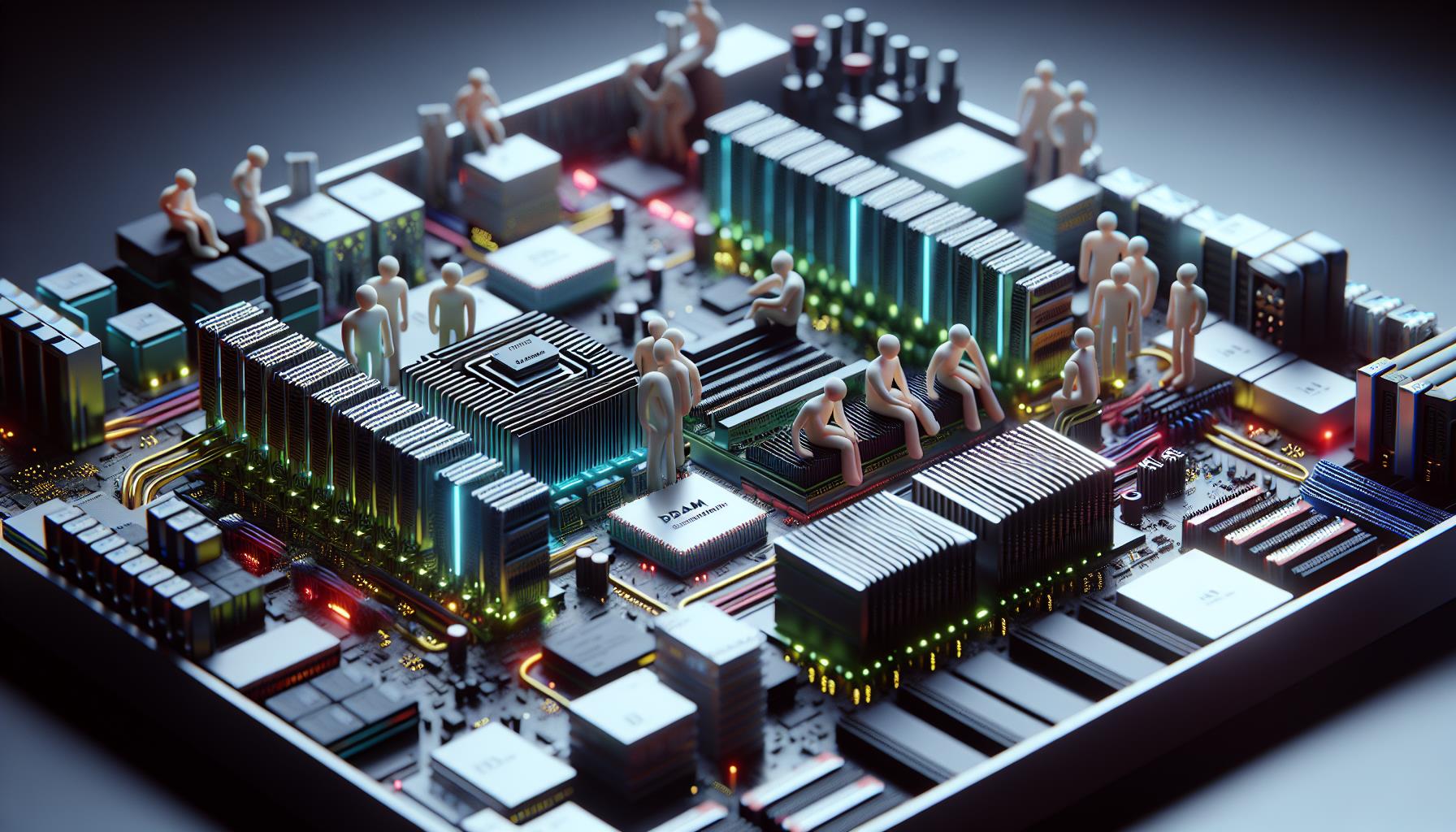In a bold move that has caught the attention of the tech industry, a new startup has announced a revolutionary method to enhance the performance of large language models (LLMs) using standard memory, diverging from the traditional reliance on GPU High Bandwidth Memory (HBM). This innovative approach, leveraging the promising Compute Express Link (CXL) technology, aims to make LLM operations more efficient and cost-effective.
The startup’s claims have sparked a mixture of excitement and skepticism among experts. While the potential to democratize access to advanced AI technologies is appealing, many are awaiting concrete evidence to support the startup’s assertions. The company’s approach hinges on the efficiency and scalability of CXL technology, which allows high-speed, interconnectivity between CPU memory and devices, potentially bypassing the bottlenecks associated with GPU HBM.
Experts Weigh In on the Feasibility
Despite the promising premise, several industry experts have expressed reservations about the startup’s claims. The primary concern revolves around whether standard memory can truly match the performance levels of GPU HBM, which is specifically designed to handle the intensive computational demands of LLMs. GPU HBM offers unparalleled bandwidth and speed, characteristics that are critical for the smooth operation of complex AI models.
However, proponents of the startup’s technology argue that the integration of CXL could bridge the gap between standard memory and GPU HBM. CXL technology is celebrated for its ability to significantly enhance data transfer rates and reduce latency, which could, in theory, compensate for the limitations of standard memory in LLM applications.
The Role of CXL Technology
At the heart of the startup’s strategy is the Compute Express Link (CXL) technology, an open industry standard that enables high-speed, coherent interconnectivity between processors, memory, and accelerators. CXL is designed to improve the performance of data centers and AI applications by facilitating faster and more efficient data movement.
The startup believes that by leveraging CXL, they can effectively utilize standard memory for LLM tasks, which traditionally require the high bandwidth and low latency provided by GPU HBM. This could not only reduce costs but also increase the scalability of LLM deployments, making advanced AI technologies more accessible to a broader range of users and applications.
Challenges and Opportunities Ahead
While the startup’s approach is innovative, it is not without its challenges. Implementing CXL technology at a scale that can compete with established GPU HBM solutions will require significant technical expertise and industry support. Additionally, the startup must demonstrate that their solution can deliver consistent, reliable performance across a wide range of LLM applications to gain widespread acceptance.
Despite these hurdles, the potential benefits of the startup’s technology are undeniable. If successful, it could lead to more cost-effective and scalable LLM solutions, opening up new possibilities for AI applications in various sectors, including healthcare, finance, and education.
Looking to the Future
The tech community is watching closely as the startup moves forward with its ambitious plans. While there is still much to prove, the prospect of using standard memory for LLM tasks represents a significant shift in the AI landscape. As the startup continues to develop and test its technology, the industry awaits concrete results that could validate the potential of CXL and standard memory in revolutionizing LLM performance.
Ultimately, the success of this innovative approach will depend on its ability to meet the high expectations set by the startup and its supporters. With further development and rigorous testing, the company’s vision of making advanced AI technologies more accessible and efficient could become a reality, marking a new chapter in the evolution of large language models.
The startup’s claim of boosting LLM performance using standard memory instead of GPU HBM, supported by CXL technology, has undoubtedly stirred interest and debate within the tech community. While the skepticism of experts is understandable, the potential impact of this innovation cannot be ignored. As the startup progresses with its technology, the industry remains eager to see if this novel approach can truly deliver on its promises and reshape the future of AI computing.
In the rapidly evolving field of AI, breakthroughs often come from unexpected places. Whether this startup’s approach will become one of these breakthroughs remains to be seen. However, the pursuit of more accessible and efficient AI technologies is a goal that continues to drive the industry forward, promising exciting developments on the horizon.
